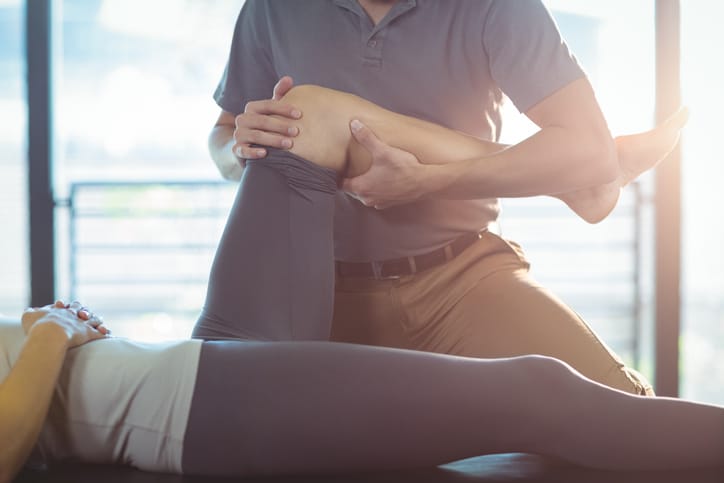
Physical Therapy Exercises for the Knee
Knee pain is one of the most common causes of disability in elderly men and women. Pain or swelling in the knee can be due to a number of reasons, including injury, joint trauma, or osteoarthritis. There are many physical therapy exercises for the knee that can be performed at home. Daily exercise can help alleviate pain and increase motion.
What is osteoarthritis?
Osteoarthritis is a condition that affects the knee and other joints that carry weight. Everyone has cartilage in their knees that covers the ends of the bone and acts as a cushion. That cartilage works to absorb energy and tension with each step you take. When that cartilage breaks down, your knee no longer has that cushion, which can cause bones to grind together. The point when cartilage deteriorates is when osteoarthritis is usually diagnosed. Those suffering from loss of cartilage in the knee experience chronic pain, swelling, and even loss of motion.
Physical Therapy Benefits
Physical therapy is a form of health care that provides progressive treatment of the physical body. There are many reasons elderly might choose to receive physical therapy, including to:
- Improve endurance
- Rehabilitate following surgery
- Enhance gait (walking technique) training
- Increase mobility and strength
Physical therapy for the knee can help alleviate pain and soreness caused by an injury or arthritis. To begin, a physical therapist will assess your leg from your hip to your feet. All parts of your lower extremities work together, and pain can be connected to other joints in your body. Before you meet with a physical therapist for knee treatment, you should be able to clearly describe where in the knee the pain is coming from, and what you believe is the cause of the pain.
Physical Therapy Exercises for the Knee
When you meet with a physical therapist, they will suggest physical therapy exercises that you can perform at home as part of your treatment plan. It’s important to continue your treatment at home so you can get the most out of your therapy sessions. Making progress on your own in between treatments will help your therapist prescribe the best treatment.
When your knee is in pain, it can be counterintuitive to want to exercise. However, exercise and movement of the knee will actually help alleviate the pain. Here are some exercises that your physical therapist may suggest.
- Straight Leg Raises – Lie down on your back on an exercise mat with both legs straight out. Bend one leg and bring your foot up next to your other thigh. Raise the straight leg a couple of inches off the floor and then set it back down again. Repeat 10 times on each leg.
- Bridge Hip Raises – In the same position lying flat on an exercise mat, bend both knees and plant your feet to make a triangle shape with your legs and the floor. Using your core, raise your hips up to the ceiling. Hold for five seconds and then place your hips back on the floor. The hips and knees are connected. By strengthening your hips, you are also strengthening your knees.
- Single Leg Squat Hold – Stand up straight with your arms out in front of you for balance. Slowly squat down as far as you can. Raise one leg up off the ground and hold for 10 seconds. Switch legs and hold for 10 seconds on the other side.
- Quad Stretch – Standing up straight, raise your left arm up to the ceiling with your bicep next to your ear. Place your right hand out to the side at a 90-degree angle with your elbow at your hip. Gently reach back with your right hand to grab the back of your right foot. You should feel a stretch in the front of your thigh. Switch sides.
- Groin Stretch – Lie down on your back on an exercise mat with your legs straight out. Reach down and grab your right knee. Gently bring your knee up to your armpit. Hold for 10 seconds and switch legs.
- Hamstring Stretch – Sit down on the floor with both legs straight out in front of you. Take a deep breath and raise your hands above your head. As you breathe out, bend down and reach for your toes or ankles. Hold for 10 seconds.
Your physical therapist will advise you on the types of exercises you should be performing at home. It’s important to communicate your symptoms and progress with your physical therapist at every session.
Santé is proud to offer a variety of senior healthcare options, including in-home physical therapy. From our Transitional Rehabilitation Centers and Hospice to our Home Health component, Santé’s goal is to reshape the after-hospitalization care industry and revolutionize the way guests and patients heal their mind, body, and spirit. For more information about our physical therapy and other services, call us at (480) 563-2402 or stop by one of our five Arizona locations.



